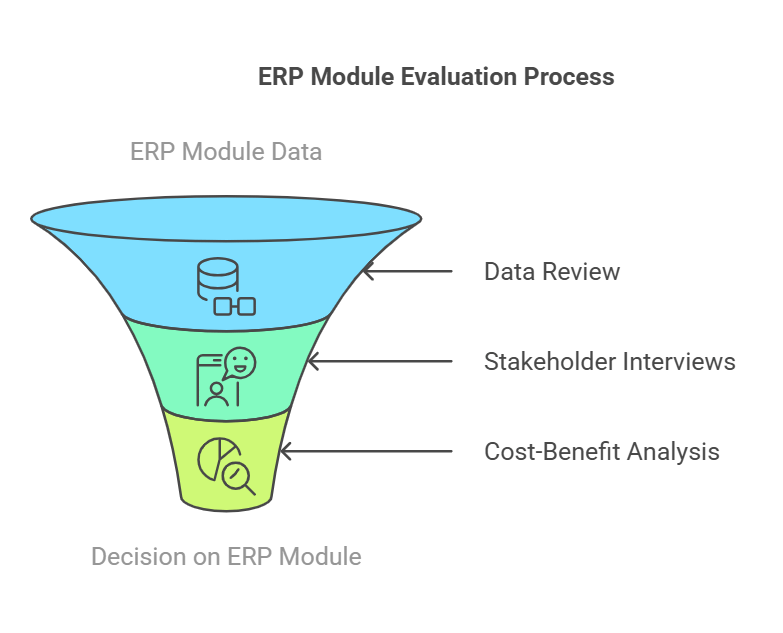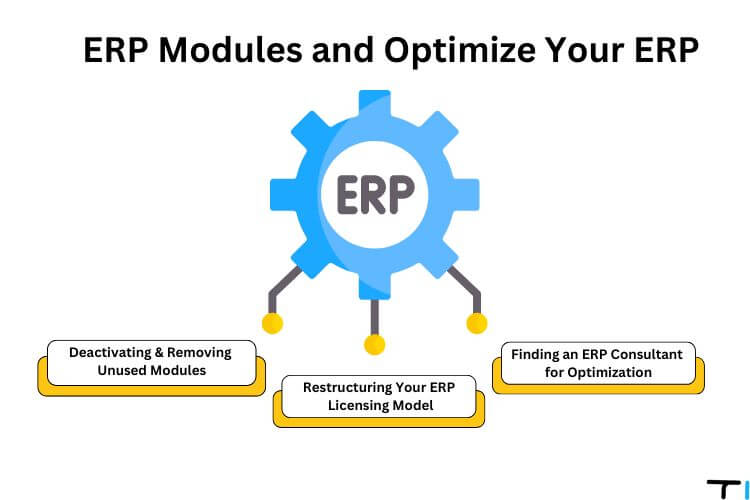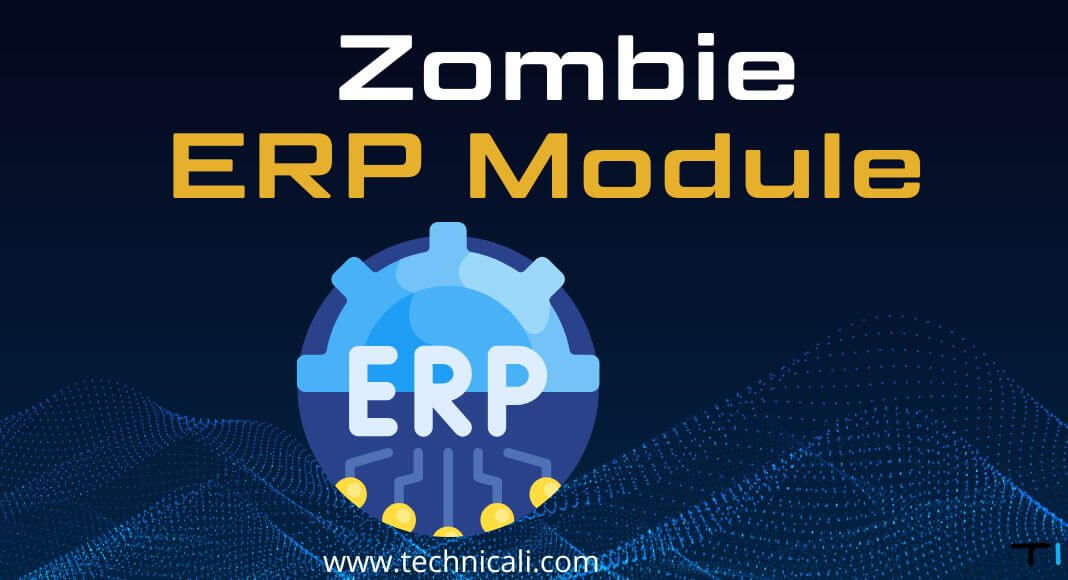In the complex realm of enterprise software, ERP (Enterprise Resource Planning) can be the lifeblood of daily operations or it can quickly become a phantom apparatus haunting your organization. Don’t let hidden inefficiencies wreak havoc on your ERP system. When implementation goes awry, or requirements change, entire modules often underutilized, sometimes completely unused can transform into “zombie” ERP modules.
They lurk unseen in your old ERP environment, draining your budget without providing tangible benefits. Below, we explore topics that many zombie modules inhabit, dissecting how they lead to inefficiencies and how you can reclaim cost control. From integration snafus to missed ROI, we’ll take a head-on approach to banish these ghoulish remnants of an old ERP system before they haunt your business further.
Contents
- 1 Introduction: The Hidden Cost of ERP Zombie Modules
- 2 What is a Zombie ERP Module?
- 3 How to Identify Zombie ERP Modules in Your System
- 4 The True Cost of Zombie ERP Modules
- 5 How to Perform an ERP Module Audit (Step-by-Step)
- 6 Zombie ERP Modules vs. Modern ERP Solutions: A Comparison
- 7 How to Eliminate Zombie ERP Modules and Optimize Your ERP
- 8 Future-Proofing Your ERP: How to Prevent Zombie Modules
- 9 Conclusion: Stop the ERP Zombie Apocalypse
Introduction: The Hidden Cost of ERP Zombie Modules
Did you know? Recent analytics indicate that over 40% of ERP modules in medium-to-large businesses often go unused. Yet, they continue demanding license fees and computing resources.
When your ERP system is like a specter wandering the halls filled with archaic features, unpatched vulnerabilities, and confusing workflows you have a recipe for disruption. Software companies invest millions in ERP products to handle everything from financial accounting to omnichannel sales. Yet existing systems without proper planning, effective change management, or comprehensive training can morph into an outdated ERP system, teeming with phantom functionalities.
Why This Matters
- Inefficiency: Zombie components absorb resources and stall integration with more modern software solutions.
- Security Vulnerability: Unmaintained features open your organization to compliance and regulatory requirements breaches.
- Cost Overruns: You might be paying for modules that simply do not align with your business needs anymore.
Remember: An ERP system may appear robust, but careful planning and constant audit are crucial to keep it healthy.
What is a Zombie ERP Module?
The Definition
A “zombie ERP module” is an unused or outdated feature within your ERP solution that still consumes license costs, demands data migration updates, and poses a vulnerability risk despite adding no real value to your enterprise resource planning framework.
How ERP Modules Become “Zombies”
- Mergers & Acquisitions: When smaller organizations get absorbed, existing systems may overlap in functionality.
- Business Process Changes: If your workflow evolves, some parts of your old system might become redundant.
- Software Updates & Shifts: Cloud-based and modern ERP solutions can leave behind a legacy ERP module that’s never fully decommissioned.
- Lack of Training: Without giving your people the comprehensive training they need, certain functionalities remain dormant.
- Poor Implementation: Over-customization or incomplete ERP project planning can spawn modules nobody touches.
Such modules behave like a ghoul: present, draining, and perpetually stuck in limbo.
How to Identify Zombie ERP Modules in Your System
Red Flags of Unused ERP Features
- Low Employee Adoption: If your management team sees minimal usage or stakeholder feedback is negative, it’s a tip-off.
- Duplicate Processes: A new crm tool or advanced project management platform might render an ERP sub-module moot.
- Frequent Bugs: Unmaintained segments cause inefficiency and can break in ways that lead to inefficiencies across your entire supply chain.
- No Tangible ROI: If you can’t justify the cost in your analytics dashboard, you’re probably looking at an undead segment.
ERP Audit Checklist
- Identify rarely used modules by analyzing ERP usage logs and spreadsheet exports.
- Evaluate business processes and see if each module aligns with current organization goals.
- Conduct interviews with a consulting firm or internal experts to see where ERP software overlaps with newer tools.
- Pinpoint unused or underutilized functionalities through thorough implementation reviews.
Use the right approach for a thorough audit: it can drive business clarity, reduce waste, and bolster competitiveness.
The True Cost of Zombie ERP Modules
- Wasted ERP Licensing Fees: Research suggests that 44% of licensing overhead goes to components that fail to deliver meaningful outcomes.
- Inefficiencies & Performance Drag: Phantom modules can hinder integration, trap data in data silos, and cause general inefficiency in daily operations.
- Increased Cybersecurity Risks: Outdated ERP system elements often miss security patches. One dormant module can become a specter of vulnerability.
How to Perform an ERP Module Audit (Step-by-Step)

- ERP Data & Usage Review: Dig into internal logs or analytics from ERP vendors. Determine which components are active.
- Employee & Stakeholder Interviews: Gather insights from users. Their feedback reveals friction points where an ERP system fails, or duplications might exist.
- Cost-Benefit Analysis: Weigh each module’s cost against the measurable output. If it no longer meets business needs, it’s time to remove or upgrade.
Zombie ERP Modules vs. Modern ERP Solutions: A Comparison
| Feature | Zombie ERP Modules | Modern ERP Solutions |
| Cost Efficiency | High overhead and hidden fees | Pay-as-you-go, easy-to-use structures |
| Security | Frequent vulnerability | Real-time patches on cloud-based systems |
| Integration | Limited, often siloed | AI-driven or advanced connectivity |
| Customization | Bloated or excessive | Balanced, purposeful |
| Scalability | Minimal growth flexibility | Adaptable for new ERP capabilities |
How to Eliminate Zombie ERP Modules and Optimize Your ERP

- Deactivating & Removing Unused Modules: Isolate each module in your ERP system. If the data is still relevant, plan a safe migration to a consolidated repository.
- Restructuring Your ERP Licensing Model: Renegotiate contracts with ERP vendors. They’ll often adjust fees if you cut out extraneous segments from your enterprise software.
- Finding an ERP Consultant for Optimization: A seasoned consulting firm can transform your implementation, highlight overlooked areas of customization, and streamline your upgrade path.
Optimization is not an incantation; it requires diligence. Yet, with the correct steps, you can banish these spectral modules like the digital Ghostbusters we all need.
Future-Proofing Your ERP: How to Prevent Zombie Modules

AI-Powered ERP Optimization
Deploy next-generation tools that watch for usage anomalies and recommend dynamic changes. Automated triggers can prompt partial integration or upgrade suggestions when your ERP or CRM modules age.
User-Centric ERP Adoption Strategies
- Comprehensive training: Early and ongoing education for your management team ensures you reap the full benefits of each piece of the puzzle.
- Regular feedback loops: Let employees voice concerns, ensuring your ERP project doesn’t become a phantom.
Consider a test drive of emerging solutions that allow more fluid expansions or reductions. A partial go-live approach helps you monitor each new piece so no feature becomes a zombie in the future.
Conclusion: Stop the ERP Zombie Apocalypse

If your ERP system is like a chaotic realm of legacy ERP add-ons, unneeded modules, and things that bump during a late-night server check, it’s time for a targeted solution. Many zombie functionalities could go bump in the night, turning into a specter that might haunt your business. By staying proactive – via careful planning, proper planning, and scheduled audits you can minimize disruption and keep pace with smaller organizations or large enterprises alike.
Action Steps
- Don’t let these modules remain buried in your organization.
- Initiate a full erp audit and consult with experts on implementation best practices.
- Perform an upgrade to a more modern ERP or new ERP approach if necessary.
Embrace effective change management: once you update your choices, your ERP environment can flourish without ghostly overhead.
In Closing
A zombie free ERP solution offers immediate rewards in ROI, streamlined daily operations, and synergy across your entire supply chain. It’s about more than just slashing cost; it’s about forging an incantation that ensures maximum competitiveness. Whether you represent a massive corporation or a smaller organization, a well-maintained ERP environment ensures your business can continuously drive business results.
By confronting these digital specters head-on, you align your ERP ecosystem with real-world business processes and growth aspirations. And that, in essence, is how you stay prepared for things that go bump when you least expect them.


